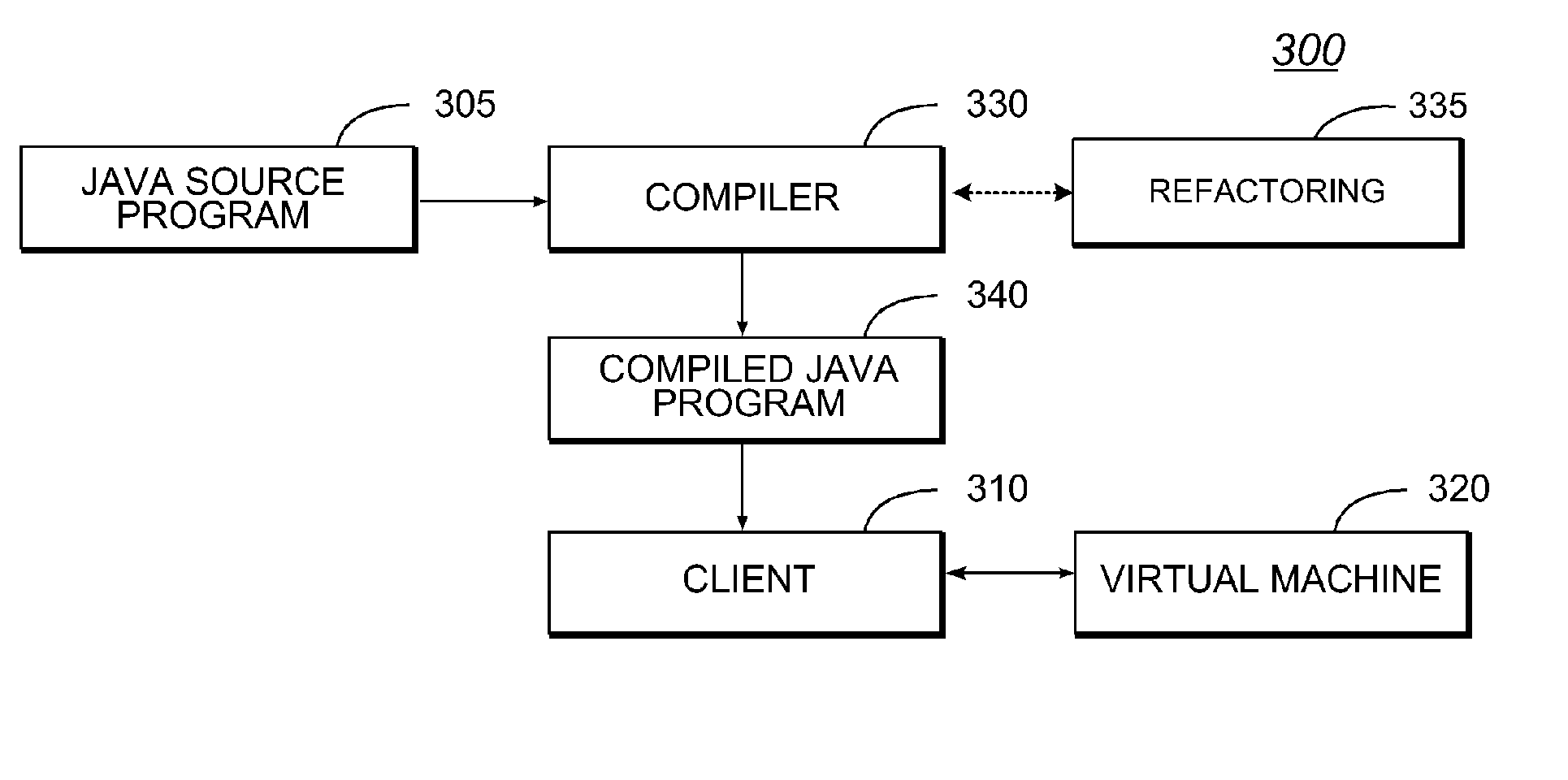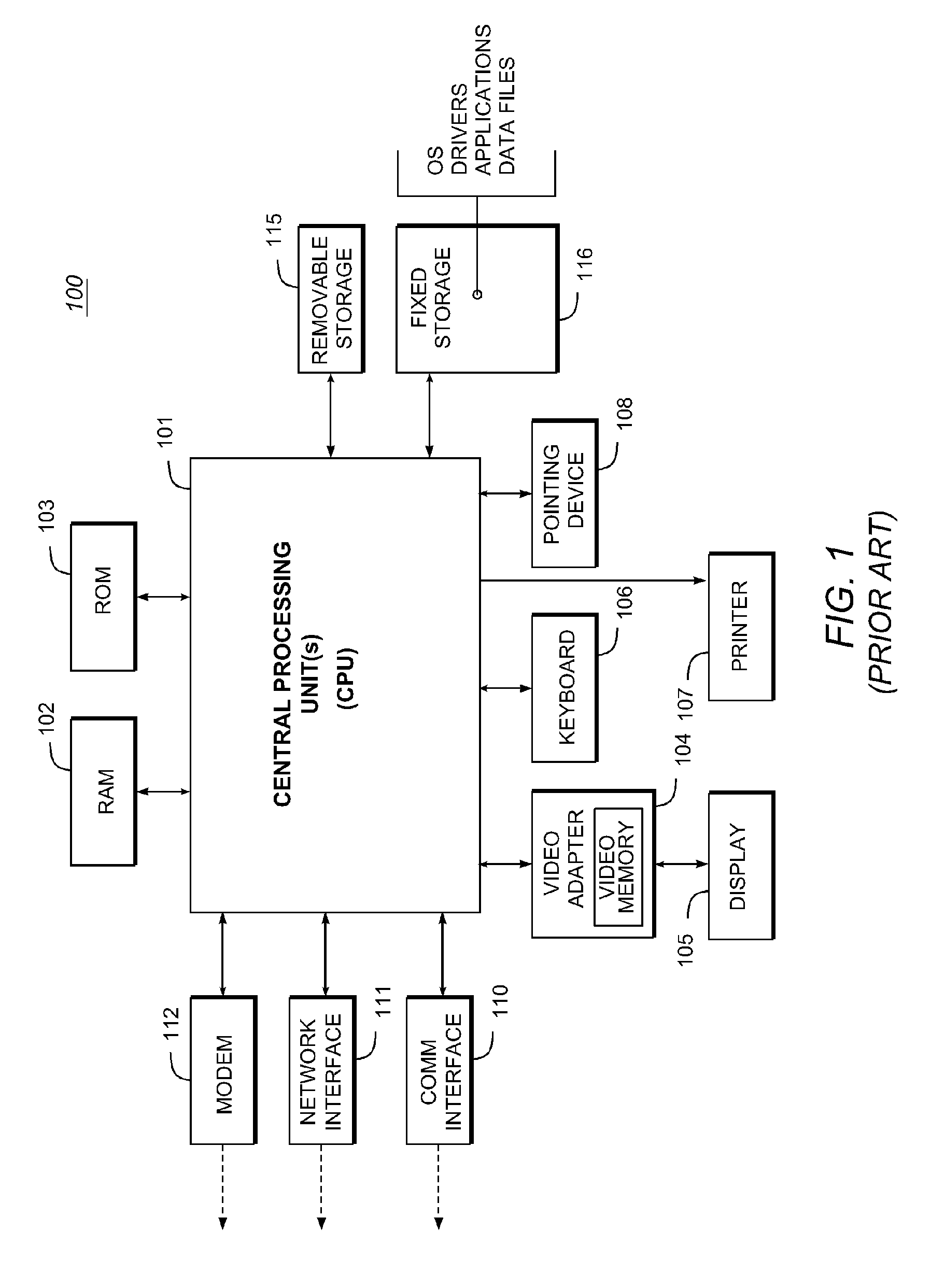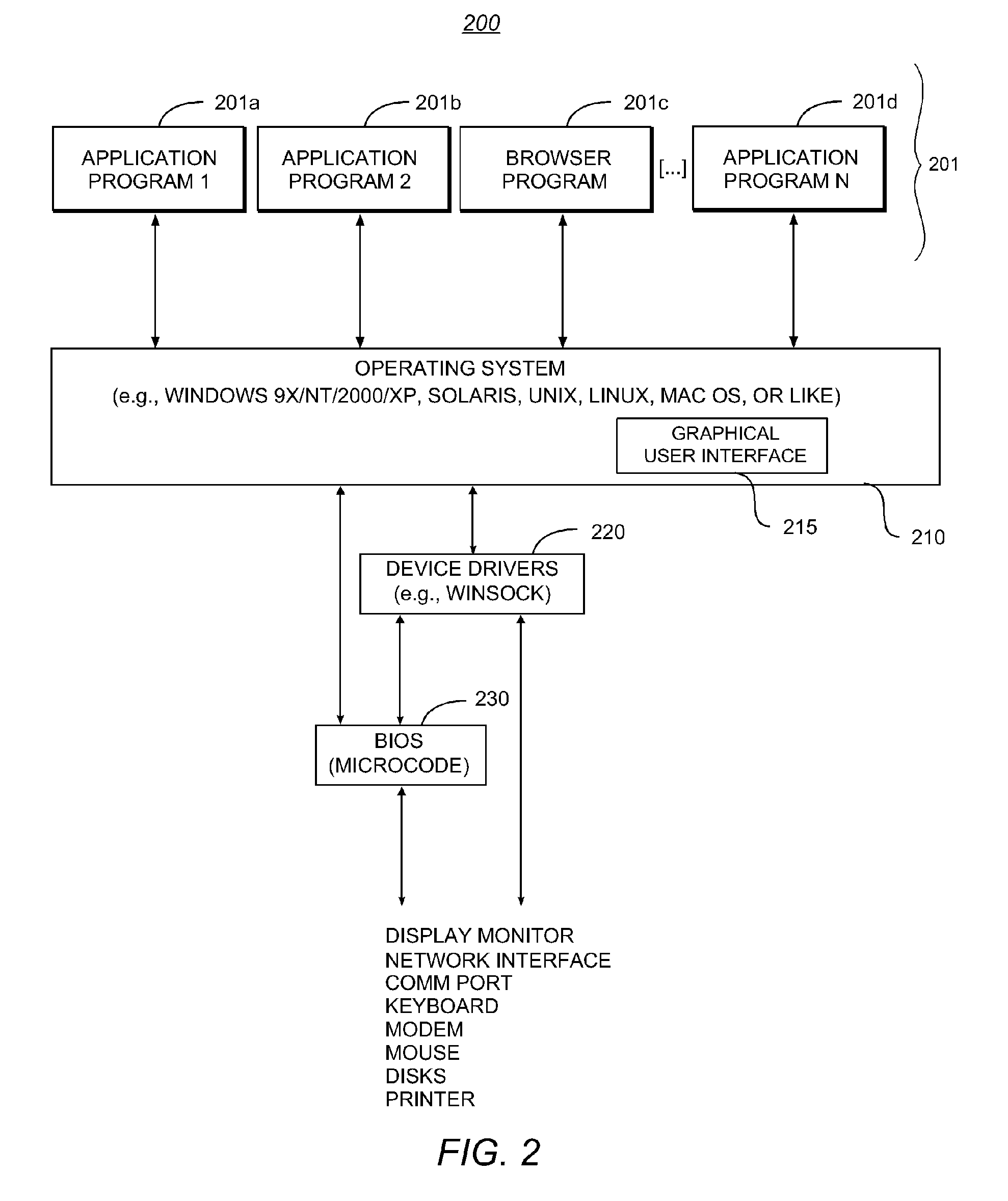System and methodology for asynchronous code refactoring with symbol injection
a technology of asynchronous code and symbol injection, applied in the field of system and methodology for asynchronous code refactoring with symbol injection, can solve the problems of initial design loss, unnecessary complexity in the software application, and the development and use of such applications
- Summary
- Abstract
- Description
- Claims
- Application Information
AI Technical Summary
Benefits of technology
Problems solved by technology
Method used
Image
Examples
Embodiment Construction
[0038]Glossary
[0039]The following definitions are offered for purposes of illustration, not limitation, in order to assist with understanding the discussion that follows.
[0040]Bytecode: A virtual machine executes virtual machine low-level code instructions called bytecodes. Both the Sun Microsystems Java® virtual machine and the Microsoft .NET virtual machine provide a compiler to transform the respective source program (i.e., a Java® program or a C# program, respectively) into virtual machine bytecodes.
[0041]Compiler: A compiler is a program which translates source code into binary code to be executed by a computer. The compiler derives its name from the way it works, looking at the entire piece of source code and collecting and reorganizing the instructions. Thus, a compiler differs from an interpreter which analyzes and executes each line of code in succession, without looking at the entire program. A “Java compiler” translates source code written in the Java® programming languag...
PUM
 Login to View More
Login to View More Abstract
Description
Claims
Application Information
 Login to View More
Login to View More - R&D
- Intellectual Property
- Life Sciences
- Materials
- Tech Scout
- Unparalleled Data Quality
- Higher Quality Content
- 60% Fewer Hallucinations
Browse by: Latest US Patents, China's latest patents, Technical Efficacy Thesaurus, Application Domain, Technology Topic, Popular Technical Reports.
© 2025 PatSnap. All rights reserved.Legal|Privacy policy|Modern Slavery Act Transparency Statement|Sitemap|About US| Contact US: help@patsnap.com



